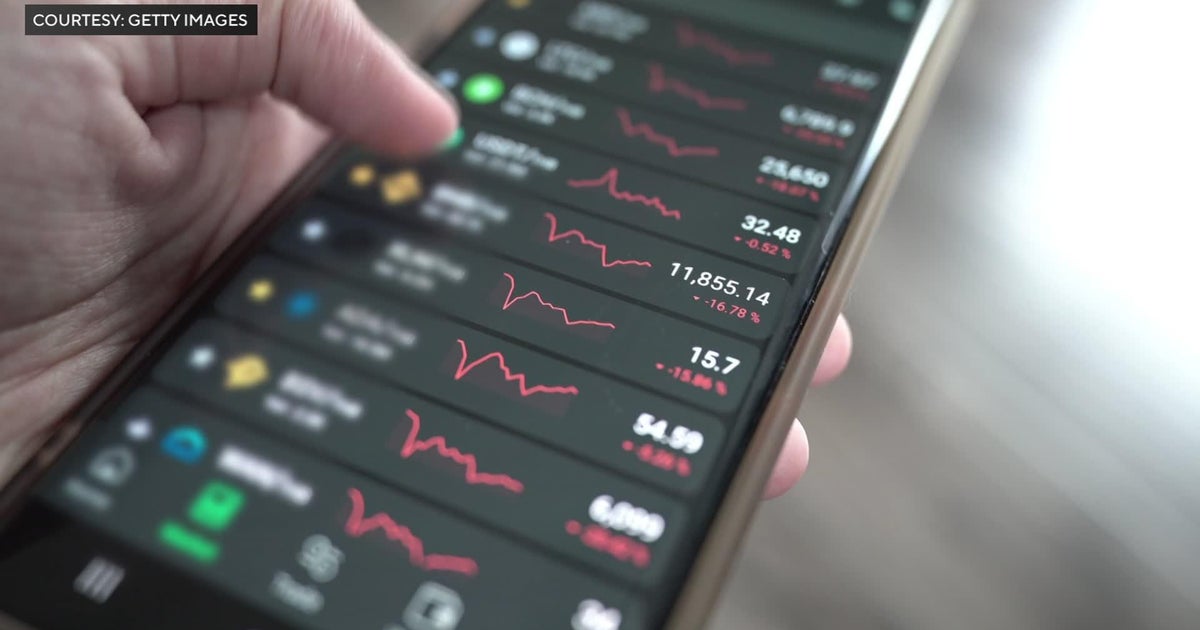Crypto
Cryptocurrency Price Today: Bitcoin Sees Bloodbath, Dips Below $59,000. Top Coins Land In Reds

Bitcoin (BTC), the world’s oldest and most valued cryptocurrency, lost all its hard-earned gains from the past weeks and dipped below the $59,000 mark early Thursday. It is largely believed that market pressures, including US Federal Reserve Chair Jerome Powell’s comments on inflation reduction and increased selling pressure due to to the $9-billion release from Mt. Gox, has led to the recent downfall. Understandably, other popular altcoins — including the likes of Ethereum (ETH), Dogecoin (DOGE), Ripple (XRP), Solana (SOL), and Litecoin (LTC) — saw dips across the board as the overall Market Fear & Greed Index stood at 45 (Neutral) out of 100, as per CoinMarketCap data. Sam Altman-led Worldcoin (WLD) emerged to be the biggest gainer, with a 24-hour jump of nearly 6 percent. Akash Network (AKT) became the biggest loser, with a 24-hour dip of nearly 13 percent.
The global crypto market cap stood at $2.17 trillion at the time of writing, registering a 24-hour dip of 3.78 percent.
Bitcoin (BTC) Price Today
Bitcoin price stood at $58,890.09, registering a 24-hour dip of 0.43 percent, as per CoinMarketCap. According to Indian exchange WazirX, BTC price stood at Rs 53.21 lakh.
Ethereum (ETH) Price Today
ETH price stood at $3,230.37, marking a 24-hour loss of 3.65 percent at the time of writing. As per WazirX, Ethereum price in India stood at Rs 2.91 lakh.
Dogecoin (DOGE) Price Today
DOGE registered a 24-hour dip of 5.45 percent, as per CoinMarketCap data, currently priced at $0.1148. As per WazirX, Dogecoin price in India stood at Rs 10.54.
Litecoin (LTC) Price Today
Litecoin saw a 24-hour loss of 6.45 percent. At the time of writing, it was trading at $70.46. LTC price in India stood at Rs 6,352.
Ripple (XRP) Price Today
XRP price stood at $0.4592, seeing a 24-hour dip of 4.18 percent. As per WazirX, Ripple price stood at Rs 41.52.
Solana (SOL) Price Today
Solana price stood at $136.51, marking a 24-hour dip of 7.77 percent. As per WazirX, SOL price in India stood at Rs 12,550.01.
Top Crypto Gainers Today (July 4)
As per CoinMarketCap data, here are the top five crypto gainers over the past 24 hours:
Worldcoin (WLD)
Price: $2.31
24-hour gain: 5.34 percent
Bittensor (TAO)
Price: $234.23
24-hour gain: 0.23 percent
MultiversX (EGLD)
Price: $31.75
24-hour gain: 5.82 percent
Quant (QNT)
Price: $81.14
24-hour gain: 4.60 percent
MANTRA (OM)
Price: $0.8233
24-hour gain: 4.33 percent
Top Crypto Losers Today (July 4)
As per CoinMarketCap data, here are the top five crypto losers over the past 24 hours:
Akash Network (AKT)
Price: $3.25
24-hour loss: 12.61 percent
Conflux (CFX)
Price: $0.1489
24-hour loss: 12.50 percent
Fantom (FTM)
Price: $0.492
24-hour loss: 11.34 percent
Beam (BEAM)
Price: $0.01579
24-hour loss: 11.16 percent
Floki (FLOKI)
Price: $0.0001565
24-hour loss: 11.16 percent
What Crypto Exchanges Are Saying About Current Market Scenario
Mudrex co-founder and CEO Edul Patel told ABP Live, “Bitcoin is currently trading around the $58,000-$59,000 zone. This level is significant as BTC faces various market pressures, including outflows from spot BTC ETFs after a five-day inflow streak, selling pressure from the release of $9 billion from Mt. Gox, and US Federal Reserve Chair Jerome Powell’s comments on inflation reduction, stating that more evidence is needed before considering interest rate cuts. If BTC breaks below this support level, it could potentially drop to the next support levels at $56,500, $54,800, and $50,500. Investors and traders should closely monitor the market.”
CoinSwitch Markets Desk noted, “BTC crashed to a new three month low of under 58k USD before a mini recovery back to just under 60k USD. While the local low of BTC stands at 56.7k USD, anything lower would take us to a 5 month low in BTC prices. If not recovered again, 60k USD may now become a resistance. On the other hand, asset management firm Bitwise has amended its S-1 registration with the US SEC expected to give the final approvals on the ETH ETF as early as July. However this news could not stop ETH to bleed as it fell by more than 3% yesterday.”
Rajagopal Menon, Vice President, WazirX, said, “In the past 24 hours, more than $64.2 million in Bitcoin long positions have been liquidated, intensifying the asset’s selling pressure. Bitcoin failed to break the $61,000 resistance, prompting a decline to the critical $58,000 level. Further resistance is expected around the $60,000 mark as bears dominate the market, driven by liquidations, whale movements, and miner sell-offs. Uncertainty surrounding the Federal Reserve’s interest rate decisions is also adding to Bitcoin’s volatility. Federal Reserve Chair Jerome Powell has hinted at larger-than-expected rate cuts, though no timeline has been provided. This outlook is seen as bullish for Bitcoin and major altcoins. Additionally, a slowdown in miner sell-offs could alleviate market pressure in the coming weeks.”
Sathvik Vishwanath, CEO and co-founder of Unocoin, said, “Bitcoin recently fell below $60,000 to $59,544, driven by a stronger US dollar supported by robust labor market data, reducing expectations of an impending Fed rate cut. Federal Reserve Chairman Jerome Powell’s cautious stance on inflation targets further added to uncertainty and affected bitcoin’s trajectory. The upcoming launch of the Ethereum ETF on July 8 could intensify competition in the crypto market and potentially add downward pressure on Bitcoin prices as investors focus on more. Technical indicators suggest caution, with the RSI nearing oversold levels and the 50 EMA indicating resistance. Bitcoin’s immediate support is around $59,000, key to its short-term bullish outlook.”
CoinDCX Research Team told ABP Live, “The crypto market experienced a significant decline, with BTC dipping to $58,000, filling all CME futures gaps. BTC is now at a crucial level of $59,000; losing this level could lead to a continued fall to $54,000. A reversal from here could target the range high of $72,000-$73,000. ETH also dropped, bouncing from key support at $3,150. Below this, support is at $3,050, with resistance at $3,370.”
Subscribe And Follow ABP Live On Telegram: t.me/officialabplive
Disclaimer: Crypto products and NFTs are unregulated and can be highly risky. There may be no regulatory recourse for any loss from such transactions. Cryptocurrency is not a legal tender and is subject to market risks. Readers are advised to seek expert advice and read offer document(s) along with related important literature on the subject carefully before making any kind of investment whatsoever. Cryptocurrency market predictions are speculative and any investment made shall be at the sole cost and risk of the readers.

Crypto
Solana ETF by Bitwise Dominates 2025 Launches—and Day 2 Blows Past Expectations

Crypto
Data: The cryptocurrency market shows mixed results, with slight increases in the Meme and Layer 1 sectors, while BTC drops to 110,000 USD – ChainCatcher

ChainCatcher message indicates that, according to SoSoValue data, various sectors of the encrypted market are experiencing mixed gains and losses. Among them, the Meme sector rose by 1.38% in 24 hours, with Pump.fun (PUMP) and OFFICIAL TRUMP (TRUMP) increasing by 12.98% and 13.65%, respectively; the Layer1 sector increased by 1.02%, with Zcash (ZEC) continuing to rise significantly by 10.77% and Hedera (HBAR) up by 5.22%.
In addition, Bitcoin (BTC) continues to pull back, down 1.60% in 24 hours, retreating to around $110,000. Ethereum (ETH) fell by 1.35%, maintaining around $3,900.
In other sectors, the CeFi sector rose by 0.66%, with Binance Coin (BNB) up by 0.79%; the DeFi sector increased by 0.59%, with World Liberty Financial (WLFI) rising by 3.92%; the Layer2 sector went up by 0.52%, with Merlin Chain (MERL) increasing by 7.50%; additionally, the PayFi sector fell by 0.93%, but Litecoin (LTC) rose against the trend by 2.52%.
The cryptocurrency sector indices reflecting historical market trends show that the ssiAI, ssiNFT, and ssiMeme indices rose by 2.42%, 1.77%, and 1.42%, respectively.
ChainCatcher reminds readers to view blockchain rationally, enhance risk awareness, and be cautious of various virtual token issuances and speculations. All content on this site is solely market information or related party opinions, and does not constitute any form of investment advice. If you find sensitive information in the content, please click “Report”, and we will handle it promptly.
Crypto
Wisdomtree Taps BNY Mellon to Power Onchain Banking With Tokenized Assets

-

 New York1 week ago
New York1 week agoVideo: How Mamdani Has Evolved in the Mayoral Race
-

 News1 week ago
News1 week agoVideo: Federal Agents Detain Man During New York City Raid
-

 News1 week ago
News1 week agoBooks about race and gender to be returned to school libraries on some military bases
-

 News1 week ago
News1 week agoVideo: Driver Crashes Car Into Security Gate Near White House
-

 News1 week ago
News1 week agoVideo: Inside Our Reporter’s Collection of Guantánamo Portraits
-

 Politics1 week ago
Politics1 week agoHunter Biden breaks silence on pardon from dad Joe: ‘I realize how privileged I am’
-

 World1 week ago
World1 week agoTrump to host NATO chief at White House as Putin meeting collapses
-

 Politics1 week ago
Politics1 week agoJack Smith defends subpoenaing Republican senators’ phone records: ‘Entirely proper’

















